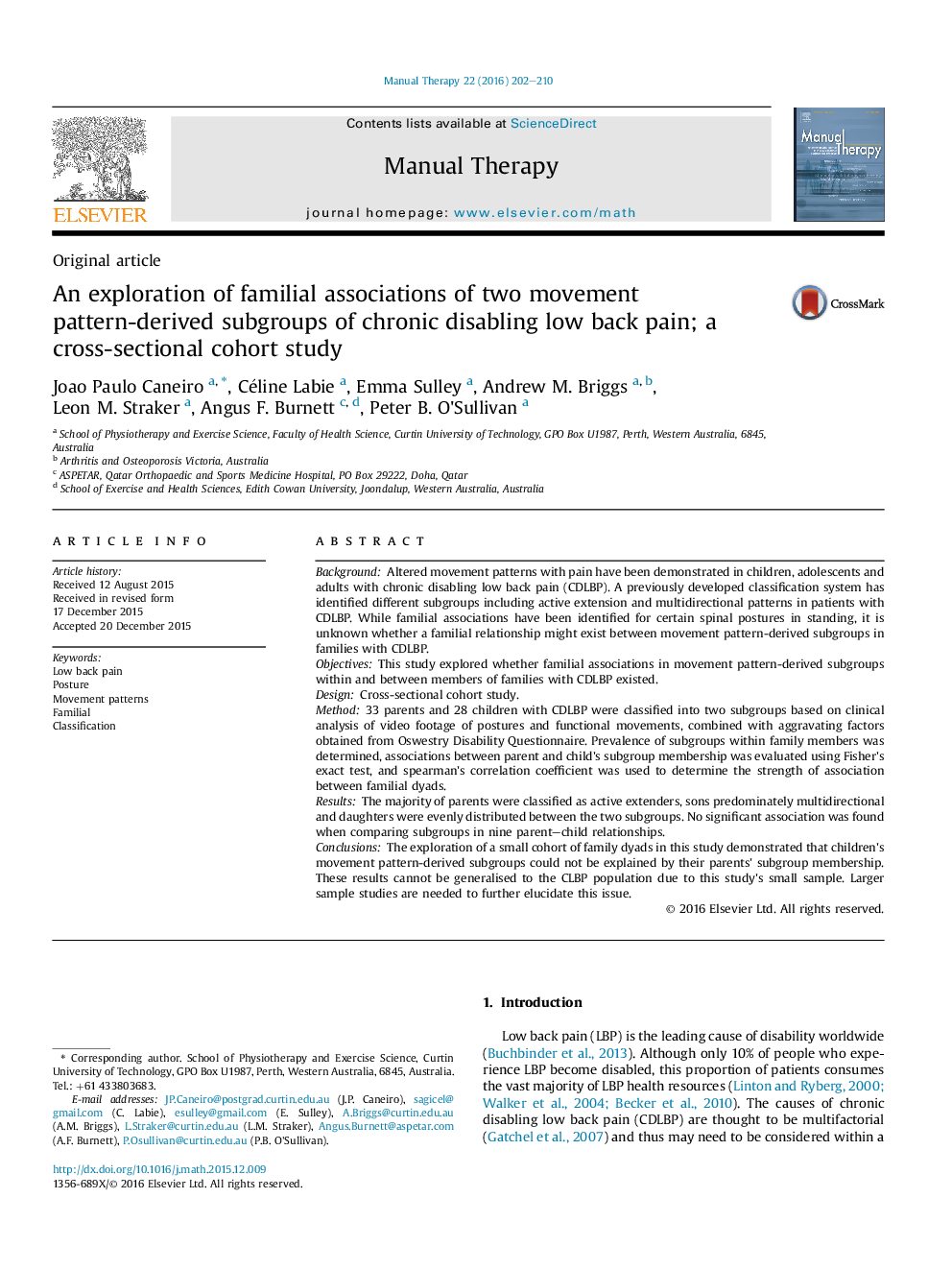| کد مقاله | کد نشریه | سال انتشار | مقاله انگلیسی | نسخه تمام متن |
|---|---|---|---|---|
| 2624948 | 1563096 | 2016 | 9 صفحه PDF | دانلود رایگان |
• First study to explore associations of movement subgroups in families with CDLBP.
• Children's subgroup membership could not be explained by their parents' subgroups.
• This preliminary study's findings can be used as a framework for future research.
BackgroundAltered movement patterns with pain have been demonstrated in children, adolescents and adults with chronic disabling low back pain (CDLBP). A previously developed classification system has identified different subgroups including active extension and multidirectional patterns in patients with CDLBP. While familial associations have been identified for certain spinal postures in standing, it is unknown whether a familial relationship might exist between movement pattern-derived subgroups in families with CDLBP.ObjectivesThis study explored whether familial associations in movement pattern-derived subgroups within and between members of families with CDLBP existed.DesignCross-sectional cohort study.Method33 parents and 28 children with CDLBP were classified into two subgroups based on clinical analysis of video footage of postures and functional movements, combined with aggravating factors obtained from Oswestry Disability Questionnaire. Prevalence of subgroups within family members was determined, associations between parent and child's subgroup membership was evaluated using Fisher's exact test, and spearman's correlation coefficient was used to determine the strength of association between familial dyads.ResultsThe majority of parents were classified as active extenders, sons predominately multidirectional and daughters were evenly distributed between the two subgroups. No significant association was found when comparing subgroups in nine parent–child relationships.ConclusionsThe exploration of a small cohort of family dyads in this study demonstrated that children's movement pattern-derived subgroups could not be explained by their parents' subgroup membership. These results cannot be generalised to the CLBP population due to this study's small sample. Larger sample studies are needed to further elucidate this issue.
Journal: Manual Therapy - Volume 22, April 2016, Pages 202–210
